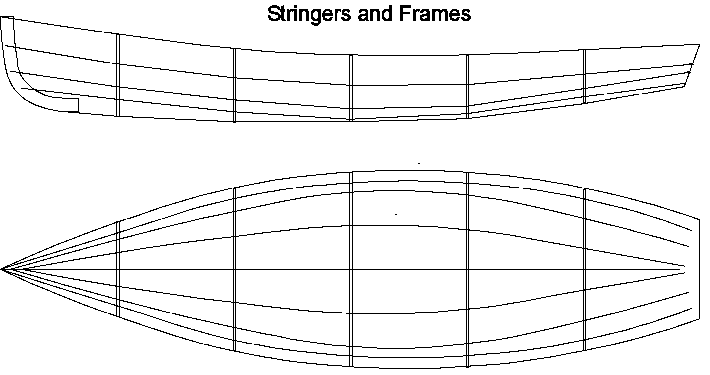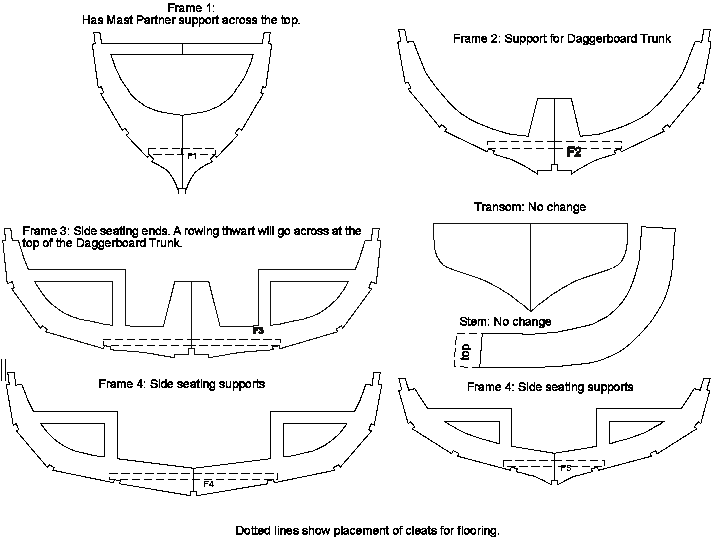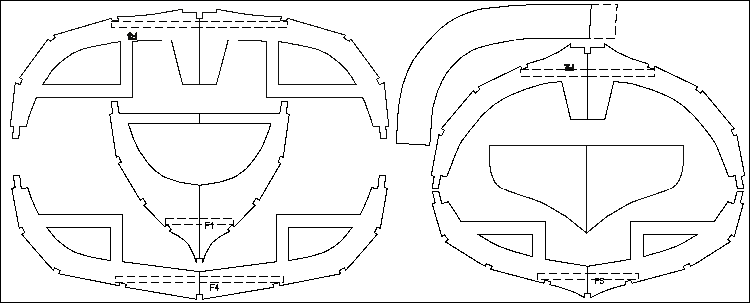|
More Design Oct 9, 2011 Previous Entry: Design Oct 6, 2011 Everything is free until you start cutting. Then things get expensive real fast. I did some more noodling to see if I could better integrate the frame cutplan with my intentions in the boat. The Goal This is what the boat should look like when done:
This is what I hope to get my boat to look like. I'm going with a short, wide daggerboard because of the conditions of the Texas 200. The wates are very shallow, and a long daggerboard is a holy terror in the high winds there. I expect this boat to be light enough that she'd catch, spin, and dump the first chance she gets. A swinging centerboard would be nice, but that takes up too much cockpit space.
I expect this boat to weigh less than 100lbs. I figure with that little weight and that much freeboard, length, and width to catch the wind, she'll go into 'hurricane mode' fairly easily. Hurricane Mode is when the the boat is blown downwind no matter what the captain is doing - like a Dixie cup on a pond. I'm reasoning that since I can't sail close to the wind in a blow anyhow, a short, wide dagger will provide me decent windward ability on long reaches without grounding nearly as often as a narrow, deep daggerboard. From my head to paper: The plans have a bunch of offsets and I entered them into my drawing program to come up with a wireframe of how the stringers and frames will lay out.
The sail plan is excellent - the sail's Center of Effort is just forward of dead center between Frames 2 and 3, right where it makes sense for my daggerboard. I have an eye towards using this as a rowboat, so I want nice, comfortable seats. The forward thwart doubles as a brace for the mast partner. The center thwart is the primary rowing station and doubles as lateral support for the daggerboard trunk. The aft thwart is for passangers or seating while sailing on a downwind run The side seating is 10" wide, not luxourous, but hardly cramped. All seats are placed so they are supported by the highest chine.
I could have cut simple U-shaped frames and saved a lot of plywood, but when I got to thinking, I figured I was going to have to add in a lot of bracing for the seats, daggerboard trunk, and mast partner. I diddled around for a long time and came up with this:
This is my cut plan - laid out on a 36 x 89 piece of 1/2" ply (the excess will go to make other parts of the boat.) I'll take this plan to the printer and have him give me a full-sized printout
Next Phase: Cutting the Wood
|







